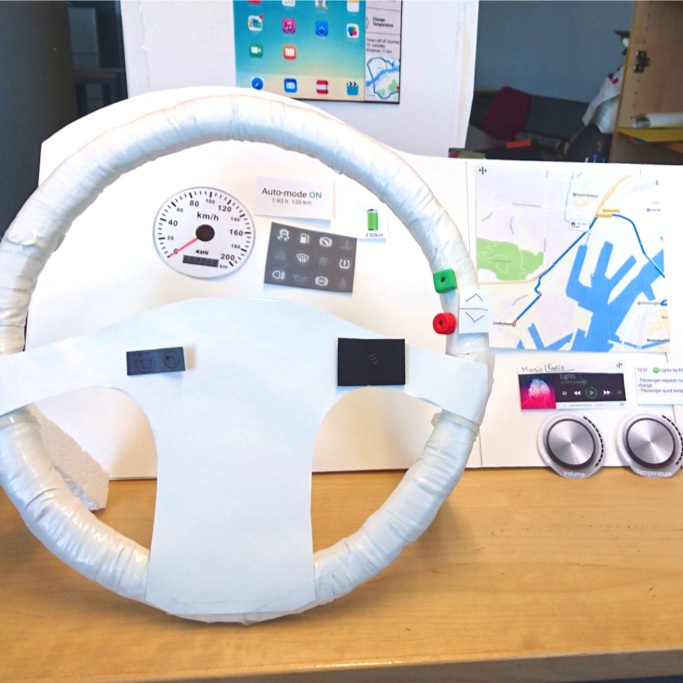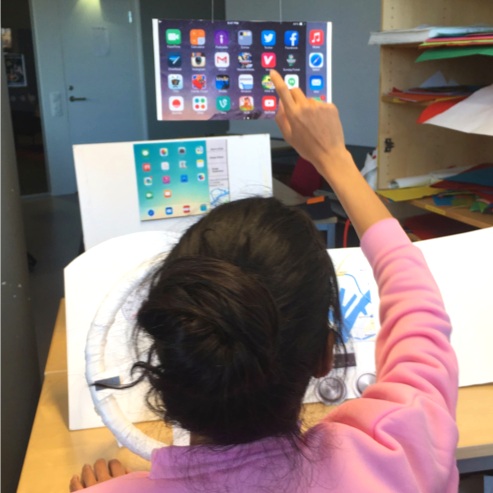
Human Centered Design
8 week project course for applying Human Centered Design Methodology to real world applications. The course was integrated with an industrial partner who assessed and provided critical feedback on our final presentation. The industrial partner worked in the area of self-driving vehicles, therefore our project involved interaction areas in autonomous cars.
The Team
Three Interaction Design Students collaborated on all work and development for the project.
Research Question
How will the areas of interaction change as cars become more autonomous?
Methods

Methods followed Human Centered Design Methodology as illustrated here. The team went through three main phases the first phase was divergent in that the investigation of the context of use aimed for a holistic understanding and collection of qualitative and quantitative data which then was synthesized (converged) in order to ideate new interaction that could become available in autonomous cars in the next 5 years. These new interaction areas were tested using a lo-fi prototype. Finally the team presented our lo-fi prototype to our industrial partner for feedback.
Inspiration
After a literature review about the development of autonomous vehicles the design team decided to focus on Level 4 autonomous cars which are forecasted in 5-10 years to be on the market. Level 4 Cars will be fully autonomous with limitations in all but a few environments. When the automated system is enabled, the driver’s attention is not fully required and therefore opens up new opportunities for interaction.
From literature studies, use scenarios and an early questionnaire and synthesis through a KJ analysis found that new interaction areas in cars should:

Support Situational Awareness at all times, to prepare for a transition between autonomous and manual control i.e Direct drivers sight towards the road
Provide information about traffic and car to both driver and passenger
Support the use of mobile devices
Ideation

Brainstorming we formed a lot of ideas that were positioned on the car based on where they made sense spatially.

Lo-Fi Paper Prototype
From the brainstorming session we moved forward with the following three interaction areas: Interactive customizable dashboard, sun visor screen, back seat screen.
A paper prototype was made with moveable components for user testing and iterations

User Testing with the Paper Prototype assessed the following ideas:
o 1. Phone mirroring on the back seat - the user was asked to assist the driver with a route change and change the volume using our interface
o 2. Front seat screen sun visor - The user was asked to sit in the front seat with phone mirrored in sun-visor. Asked to open application and scroll
o 3. Experience Comparison - user was asked to hold a phone and move components around to where they thought they made sense.
Implementation
After User Testing and iteration on the lo-fi prototype a video pitch was created and presented to the industrial partner.

